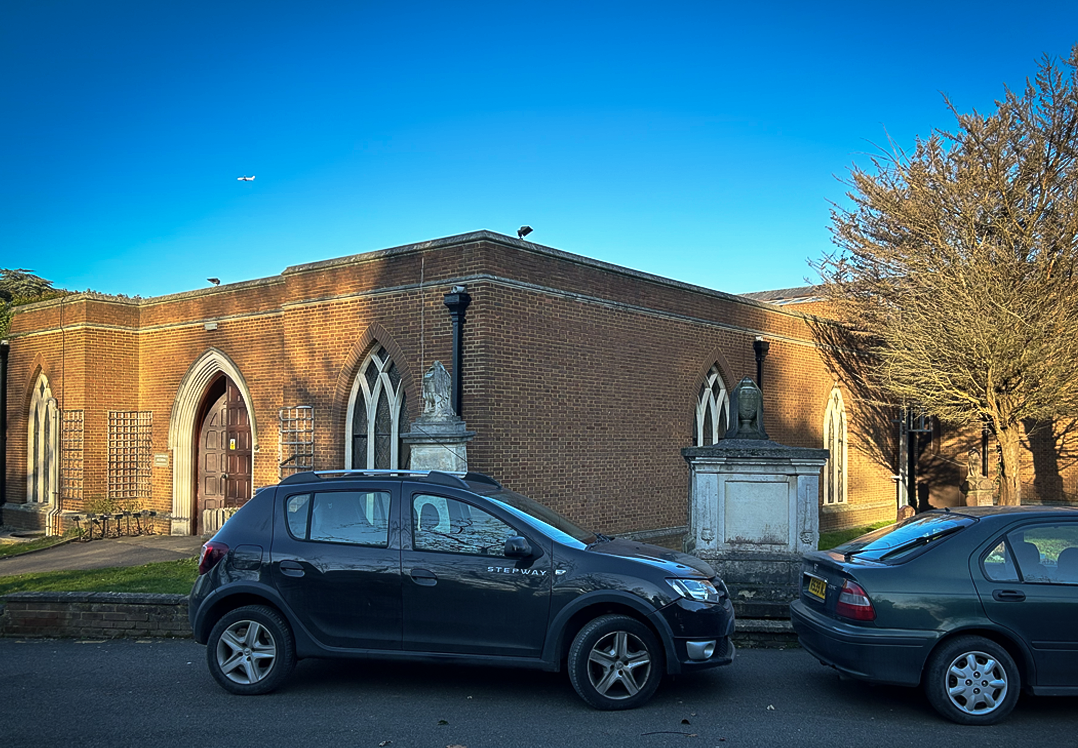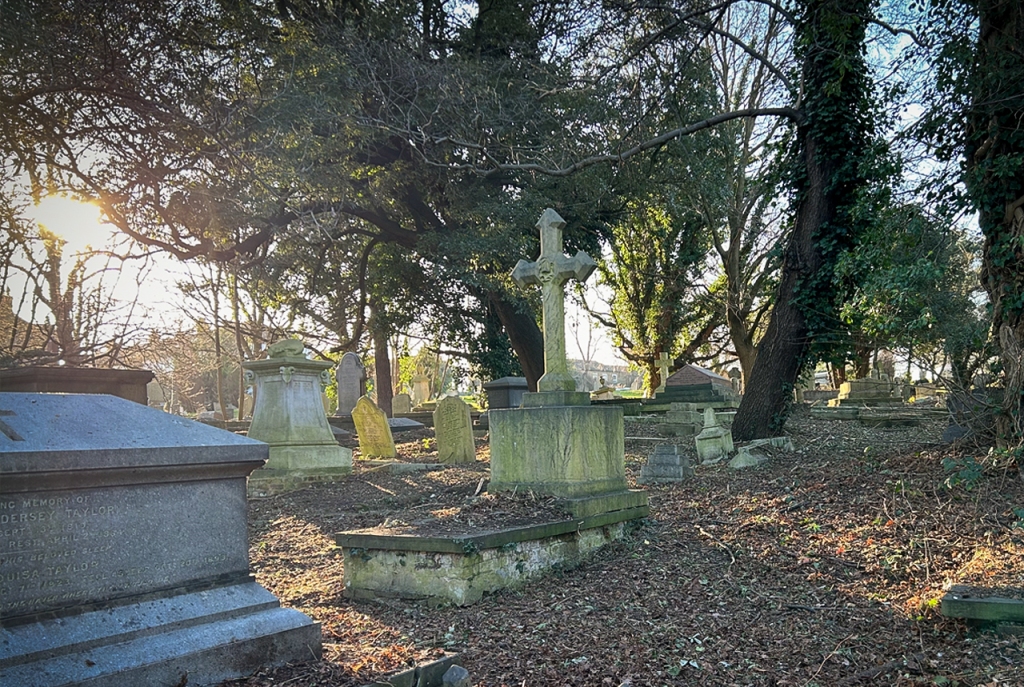West Norwood Cemetery shared an image of one of their more imposing monuments and I countered it with the same shot, but from 1968 (courtesy of Lambeth Archives).


The imposing, henge-like monument to 19th century antiquaraian John Britton. A man who wanted his own memorial to endure down the eyons. So he took inspiration from Stonehenge itself and opted for a gargantuan chunk of brown millstone grit. Colloquailally known as Bramley Fall stone and quarried from the Leeds area, it was also used on the Leeds Corn Exchange and the foundations of the Palace of Westminster. It was an idea suggested by editor of ‘The Builder’ magazine George Godwin and realised by Professor William Hosking, who had worked with Britton in his lifetime and was also the guy responsible for the Egyptian-style entrance gates of Abney Park Cemetery.
The stone has endured the shameful clearances perpetrated by Lambeth Council in the 1970s and 80s as old plots were illegally reused. It is now more or less marooned in a lawn with a few older and some newer monuments surrounding it. The landscape surrounding it has changed, but then, so has the rest of the cemetery.
This got me thinking. How else has this cemetery altered visually over the years? Opening in 1837, the landacape is not as it was. Bomb damage. Aforementioned demolition. Loss. As an avid fan of those ThenVsNow accounts on Instagram, I collated a number of historic photos and sketches from West Norwood’s history to see how its landscape has changed over time.


One of the earliest images of West Norwood, drawn on Wednesday 6th January 1847. This is an odd part of the cemetery to have sketched (square 33 for the curious) as it is not part of a main cluster of graves, although perhaps the unusual design of the ram-headed Letts memorial (he of the diary fame) may have influenced George Frederick Sargent in drawing this procession of monuments. Although James Cole’s grave remains intact adjacent to Lett’s restored grave, the ones to Mary Jane Christie, John Donaldson and Mary Ann Thornton have all long since vanished.


This is a fun one, comparing 1969 to the present day. Gideon Mantell is a fascinating bloke and alongside his wife Mary Ann, discovered the dinosaurs! Mary Ann spotted something glinting in a rock in the world while they were visiting a patient of Mantell’s in Sussex in 1822. Gideon found a resemblance to iguana teeth at the Hunterian Museum. He summised that it belonged to a giant Iguana from the past, as well as incorrectly mistaking its iconic thumb spike for a nose horn. A complete specimen would not be found until one was found in a Belgian coal mine in March 1878, 26 years after his death.
Mantell’s grave was based on the Bark Stand in the sanctuary of the Temple of Amun at Naqa, Sudan. It’s also worth saying this isn’t the original memorial, but a replacement – the original, in fragments after clearance in 1997, is beneath Anne of Cleve’s House in Sussex. The newer iteration unfortunately carries two errors relating to Mantell’s qualifications and his daughter Hannah’s age.


What is now the entrance to the columbarium was once a side door to the Anglican chapel and despite this access route, graves clung closely to the building, jostling for a position to be at the very heart of the cemetery. Perhaps through bomb damage, or just easier access for rebuilding, the handsome monuments have been cleared. The draped urn on the extreme left being the only original thing left anchoring the images in both 1920 and 2024.




The thinning of tombs to create a driveway for20th century hearses likely complimented the less ostentnatious chapel and columbarium. The tomb on the right of the picture is that of Sir Thomas Gabriel, great-great-great uncle of singer songwriter Peter Gabriel. There are a couple more Gabriel family members along that path in the background, that leads up to the former Dissenters Chapel.


Recently restored, but without its stout railings as seen here in the 1960s, the Grissell monument vaguely looks like a pulpit- and is actually made out of cast iron, with stucco and pink granite tablet inserts. Thomas de la Garde Grissell was an antiquarian and died in 1847, three months after his wife Ann. Mysteriously, his connection to East India House doesn’t seem to have been elaborated on anywhere online.


This is a sore loss. On the right hand side of the 1847 sketch is the chest tomb to Francis Cook, a very wealthy industrialist and art collector who became one of England’s richest men. He was made Viscount of Monserrat by King Luís of Portugal and restored the magnificent Monserrat Palace in Sintra as his summer residence. The architect, James Knowles, used the remains of a previous building as a starting point and alongside his son would go on to design the Grosvenor Hotel, next to Victoria Station in London.

Cook’s second wife, also buried here, was former spiritualist and active suffragist Tennessee Claflin, whose sister ran to be the first female US president in the election of 1872. The tomb was a casualty of the clearances of the 1970s and 80s, only the ankle-level brickwork of the vaults now remaining.


The caption for the black and white image says 1890, which is incorrect as the new chapel and its plain brickwork stand behind the mausoleum to the left. The central terracotta mausoleum is to Henry Tate and was designed by the architectural duo of Harold Peto and Ernest George, a formidable partnership of the 1880s who built large pasts of the Cadogan estate in Kensington and Chelsea. Tate made his fortune from sugar cubes and his factory is still in operation in Silvertown, East London and gifted a number of paintings from his art collection to the nation, which survives today as the Tate Gallery.


A snapshot into the former glories of historic cemeteries and how they used to look, I have a whole stack of these type of photos. I may do a second part to this!
Historic Photos courtesy of Lambeth Archives and Borough Photos, which covers historic photography from many other London boroughs including Lewisham and Barnet.
